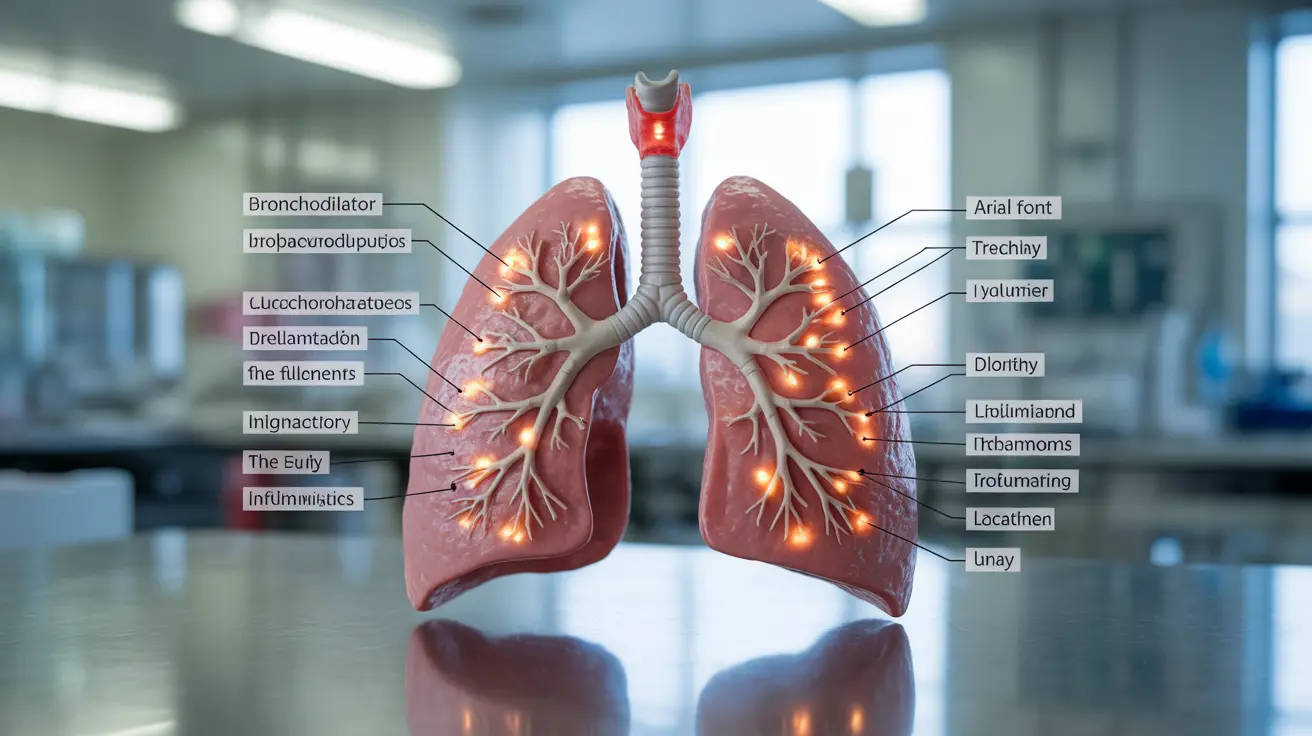Living with Chronic Obstructive Pulmonary Disease (COPD) can be challenging, but understanding the most effective treatment options is crucial for managing symptoms and improving quality of life. Modern medicine offers various approaches to COPD treatment, from traditional inhaled medications to innovative biological therapies.
In this comprehensive guide, we'll explore the most effective medicines and treatments available for COPD, helping you understand which options might be best suited for your specific situation.
Traditional COPD Medications: The Foundation of Treatment
The cornerstone of COPD treatment typically involves bronchodilators and anti-inflammatory medications. These established treatments work by opening airways and reducing inflammation to help patients breathe more easily.
Bronchodilators
Long-acting bronchodilators (LABAs and LAMAs) are often prescribed as first-line treatments. These medications help relax and open the airways, making breathing easier throughout the day. Short-acting versions provide quick relief during sudden symptoms or flare-ups.
Combination Inhalers
Many patients benefit from combination inhalers that contain both bronchodilators and inhaled corticosteroids. These dual-action medications can significantly reduce flare-ups while improving daily breathing capacity.
Advanced Treatment Options for COPD
Biological Treatments
Newer biological treatments like Dupixent and Nucala represent a significant advancement in COPD care. These medications target specific inflammatory pathways in the body, potentially reducing severe exacerbations in certain patients.
Inhaled Corticosteroids
These medications play a crucial role in managing COPD inflammation, particularly for patients with frequent exacerbations or high blood eosinophil levels. They work by reducing airway inflammation and preventing flare-ups.
Personalizing COPD Treatment
Modern COPD treatment increasingly focuses on personalized approaches based on individual patient characteristics. Factors such as blood eosinophil levels, frequency of exacerbations, and specific inflammatory patterns help determine the most effective treatment strategy.
Monitoring and Adjusting Treatment
Regular assessment of treatment effectiveness and potential side effects is essential. Healthcare providers may adjust medications based on:
- Symptom control
- Frequency of exacerbations
- Tolerance to medications
- Blood biomarker levels
Frequently Asked Questions
What is the best medicine for COPD to reduce flare-ups and improve breathing?
The best medicine varies by individual, but often includes a combination of long-acting bronchodilators (LABAs/LAMAs) and inhaled corticosteroids. For severe cases, adding biological treatments may provide additional benefits. The optimal treatment depends on factors like symptom severity and frequency of exacerbations.
How do biologic treatments like Dupixent and Nucala work for COPD?
Biologic treatments target specific inflammatory molecules in the body. Dupixent blocks interleukin-4 and interleukin-13, while Nucala targets interleukin-5. These medications can significantly reduce severe exacerbations in patients with specific inflammatory patterns.
When are inhaled corticosteroids recommended for managing COPD symptoms?
Inhaled corticosteroids are typically recommended for patients with frequent exacerbations, high blood eosinophil counts, or those who continue to experience symptoms despite using bronchodilators. They're often prescribed in combination with long-acting bronchodilators.
What are the benefits and risks of newer inhaled therapies for COPD?
Newer inhaled therapies offer improved symptom control and reduced exacerbation rates. Benefits include better lung function and quality of life. Risks may include throat irritation, voice changes, and slightly increased risk of pneumonia with some medications.
Can COPD treatment be personalized based on blood eosinophil levels or inflammation types?
Yes, COPD treatment can be personalized based on blood eosinophil levels and inflammation patterns. Higher eosinophil levels often indicate better response to inhaled corticosteroids, while specific inflammatory patterns may suggest the potential benefit of biological treatments.




